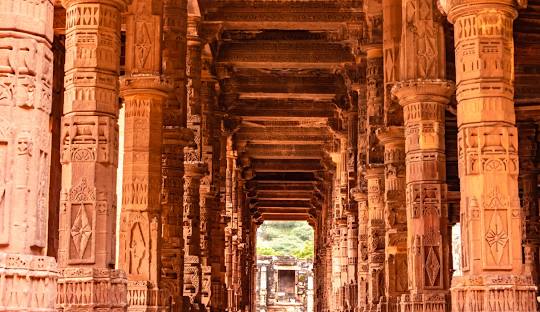


Commissioned by Qutb-ud-Din-Aibak in 1192 CE and designed by Abu Bakr of Herat, the mosque is an example of early Indo-Islamic architecture. The structure was completed in 1199 CE and was further enhanced by Iltutmish of Delhi in 1213 CE. An early example of the Indo-Islamic architecture, most of the building was constructed by Hindu masons, under the supervision of Afghan managers. The mosque retained most of the original Indian features, especially on the ornate pillars.
Read more
This fort was known for its strength and strategic importance. First islamic attack on the fort was made in 724, during reign of Chauhan King Durlabhraj I, who bravely fought muslim armies under caliph Hisham ibn Abd al-Malik. In this war, King Durlabhraj I did not receive support from fellow rajput kings. This war witnessed India's second Jauhar conducted by queens of King Durlabhraj I, along with other females in Taragarh Fort. The war is also known for sacrifice of 7-year old Chauhan Prince Lot, who bravely fought the invading armies, and laid down his life.
Read more
The Buland Darwaza is made of red and buff sandstone, decorated by white and black marble and is higher than the courtyard of the mosque. The Buland Darwaza is symmetrical and is topped by large free-standing kiosks, which are the chhatris. It also has terrace edge gallery kiosks on the roof, stylised buckler-battlements, small minor-spires, and inlay work with white and black marble. On the outside, a long flight of steps sweeps down the hill giving the gateway additional height. It is 40 meters high and 51 meters from the ground. The total height of the structure is about 54 meters from the ground level.
Read moreWelcome to the Travel Rani. We are here for help. If you have pre-sale questions just call us today!





© Travel Rani. All rights reserved 2024. Powered by: Rapsys Info Tech


